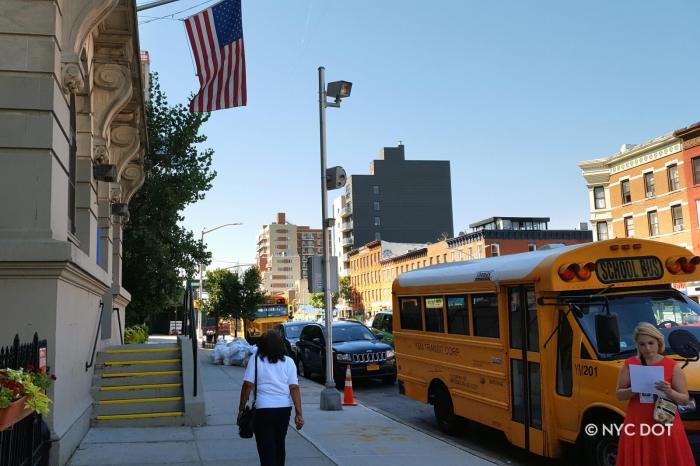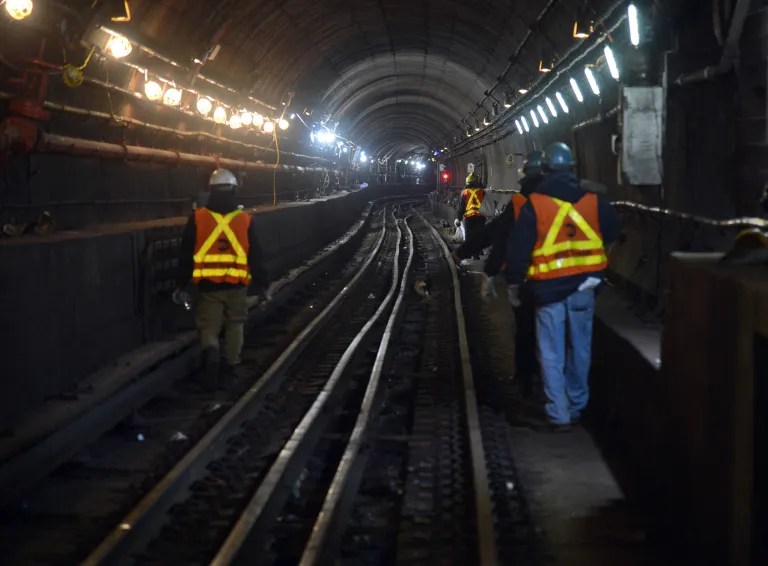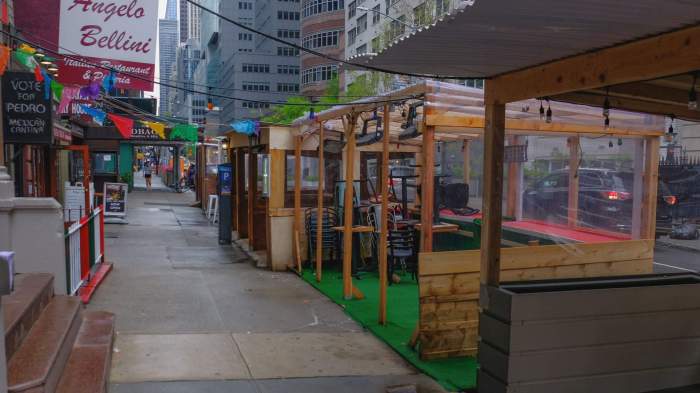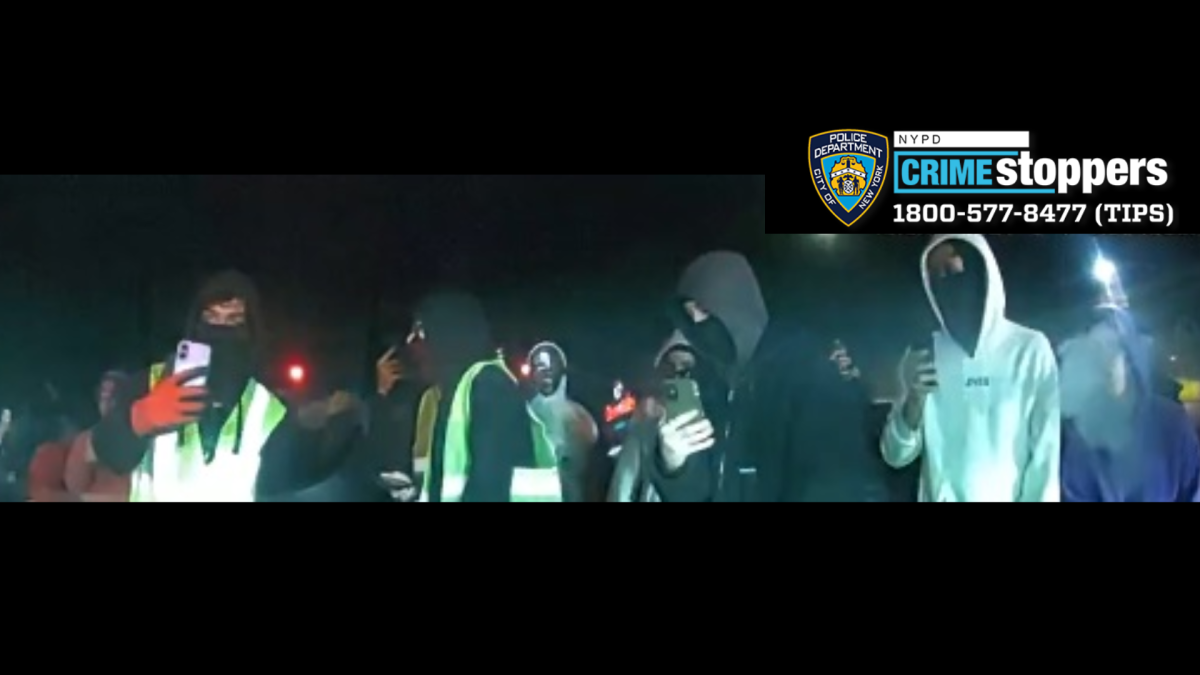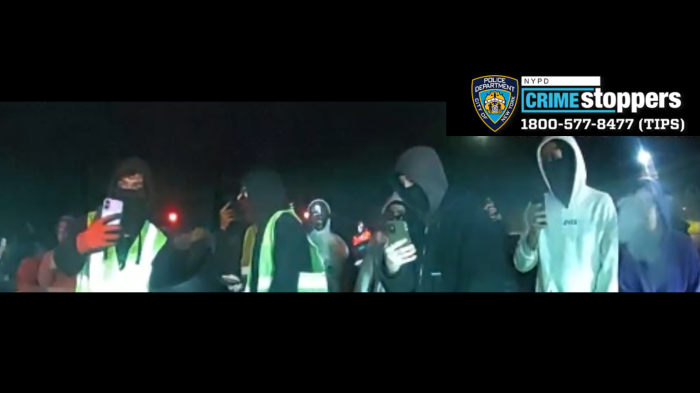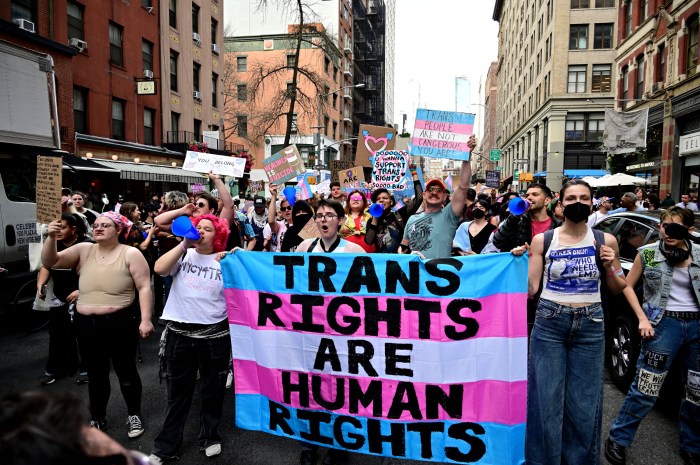
To get a glimpse into the future of subway service, the MTA would like to direct you to the 7 train.
The transit authority is nearing a complete installation of a modern signal system along the line and has been pushing more trains through during the busiest times of day. And since its new computerized signal system first began rolling out in December, rush-hour commuters riding the 7 between Queens and Manhattan say they actually feel a difference.
“I give it an 8 out of 10,” said Brenna Stone, of Hunters Point, who commutes to her marketing job in Manhattan. “It’s been good the last few weeks, but I don’t want to jinx it. When [the 7] is really good, it’s really good. But when it’s bad, it’s awful.”
During the 8 a.m. Thursday rush hour, four 7 trains arrived at Court Square within six minutes.
“Usually I find things get congested at Grand Central coming back out [to Queens],” said Nick Beck, an app builder from Long Island City, as he boarded a train at Court Square. “But the next train comes really fast after the last one. And I can get a seat.”
To be sure, the 7 and its new signals are still a work in progress — this after years of delays, cost overruns and service outages to accommodate the signal installation. But MTA officials believe they can keep improving service and better update signals going forward. They are hoping to make an example of the 7, along with broader service improvements across the system, as they advocate for more funding to bring similar upgrades across the subways.
“I think we’ve made a compelling case and certainly the success of the 7 line shows very clearly what can be done with investment and the tangible benefits that accrue. That’s the best possible case,” said Andy Byford, the MTA transit president who joined the agency at the tail end of the 7 line modernization.
Improved performance
Last month, the MTA launched automatic, computer-operated trains on the line. Train operators push a button and the train moves itself. Though the feature has been used during rush hours, it’s otherwise been put to use on a limited basis. At one point automatic operations were taken offline completely for about a week after several trains overshot their stations — a problem the MTA said it has fixed. And the MTA can’t seem to keep pieces of debris from falling off the 7’s overhead tracks.

But the signal system, known as Communications-Based Train Control or CBTC, has helped the MTA increase service from 25 to 29 trains per hour during the busiest times of day. CBTC gives the transit authority more accurate locations of the trains on a given line, allowing it to safely run more trains closer together, increasing reliability and capacity.
The 7’s on-time performance, which measures the percentage of trains that arrive at their terminals within five minutes of their schedules, has also risen. Weekday on-time performance tipped to 91% in March. Last month, it hit 90.5%, up from 63% at the same point last year, according to the MTA.
“I’ll say the pain of the 7 train CBTC installation was pretty much worth it,” said Lisa Daglian, the executive director of the Permanent Citizens Advisory Committee to the MTA and regular 7 train rider. “I’ve definitely seen an improvement … As far as the subway system goes, I would say it’s the best line I take on a regular basis.”
The L train is the only other line operating under the CBTC system. Byford’s 10-year plan to modernize the subways, known as Fast Forward, would bring the same upgrades to the majority of the subway’s ancient, frequently failing signal system. But that work would require lengthy weekend and overnight service outages.
Councilman Jimmy Van Bramer, who rides the 7 as part of his commute to City Hall, said the service interruptions over the past decade of construction were "painful" and that he was not totally sold on the progress thus far.
"I’m hoping to see more improvement. Personally I’ve seen some, but it’s going to take a lot more to allow me to forget the nightmare that was 10 years of construction and installation and lack of service," he said.
Funding woes
And it’s still unclear how much money Byford will get to carry out Fast Forward, estimated to cost around $40 billion, with a potentially ugly funding fight on the horizon.
“[Byford] has a personality that can get this through. He has a team that could get this through,” said Ben Kabak, author of the blog of Second Avenue Sagas. “As always it’s a question of whether he has the fiscal and political backing. And it’s not 100% clear right now that he does based on comments from the governor and the way this process has played out.”
There are a lot of missing details, though, including a cost breakdown for Fast Forward and the price tag of the next MTA capital plan for 2019 to 2024. Those should at least become clearer in October when the MTA must publish its capital plan, which has been estimated to cost as much as $60 billion to include the first half of Fast Forward.

Gov. Andrew Cuomo, who effectively controls the MTA, has recently cast doubt that the plan would be fully funded. Through the state budget, Cuomo secured $32 billion in funding toward the capital budget through congestion pricing and other new taxes. But he appears unwilling to attempt to secure more dollars.
“In terms of additional review we have a $30 billion plan. It’s not what [the MTA] wanted,” Cuomo said during a radio appearance earlier this month. “They wanted more money, more money, more money. The money would have to come from the fares and I’m not in favor of increasing the fares. I believe the MTA could do a better job with the billions of dollars they now have.”
Byford remains hopeful he will get the money he needs to at least carry out the core of Fast Forward in the next capital plan: signal modernization and increasing subway accessibility. He’s brought on Pete Tomlin, a former colleague with a background in installing CBTC, to add an executive dedicated to upgrading the signal system and finding new ways to do it cheaper, faster and with less service interruptions.
“We have the right plan; we now have the right man. Let’s just get on with installing CBTC across the system,” Byford said. “I’ve said it before, I’ll say it again — it will be the most transformative thing that we can do for this subway system.”



